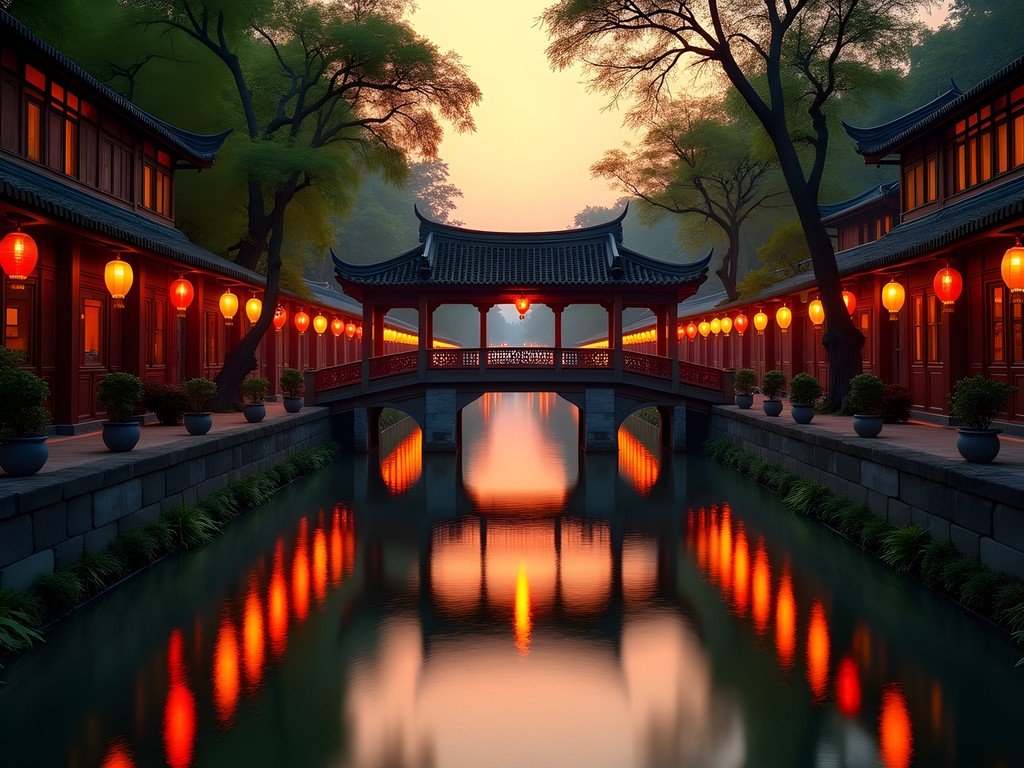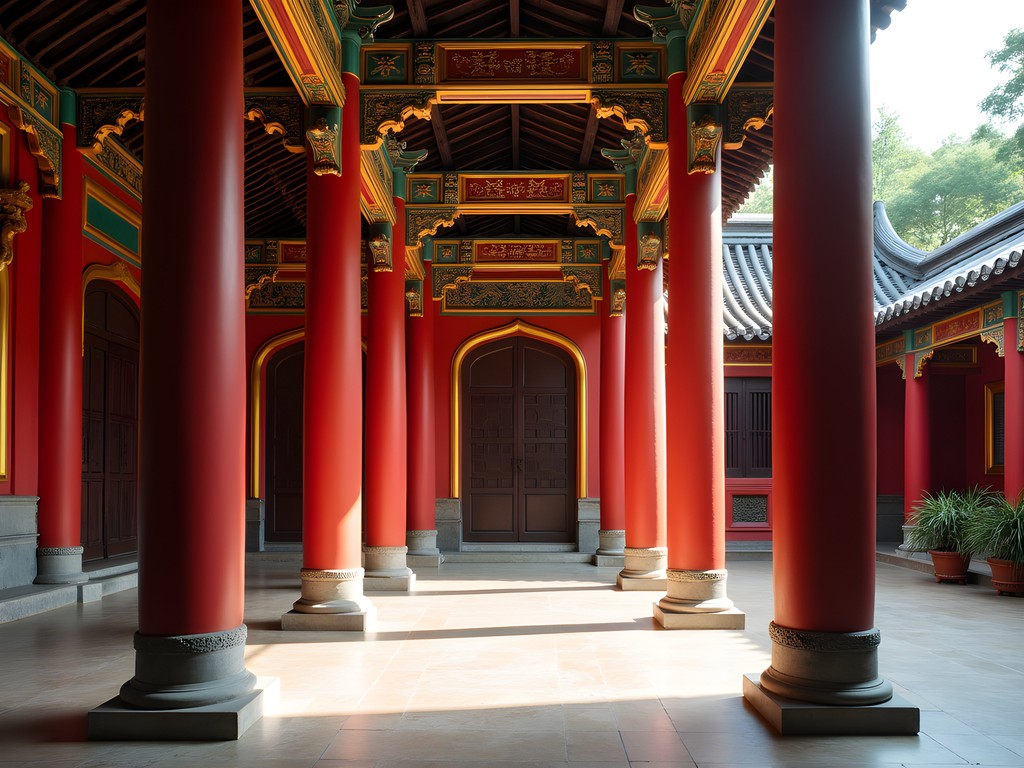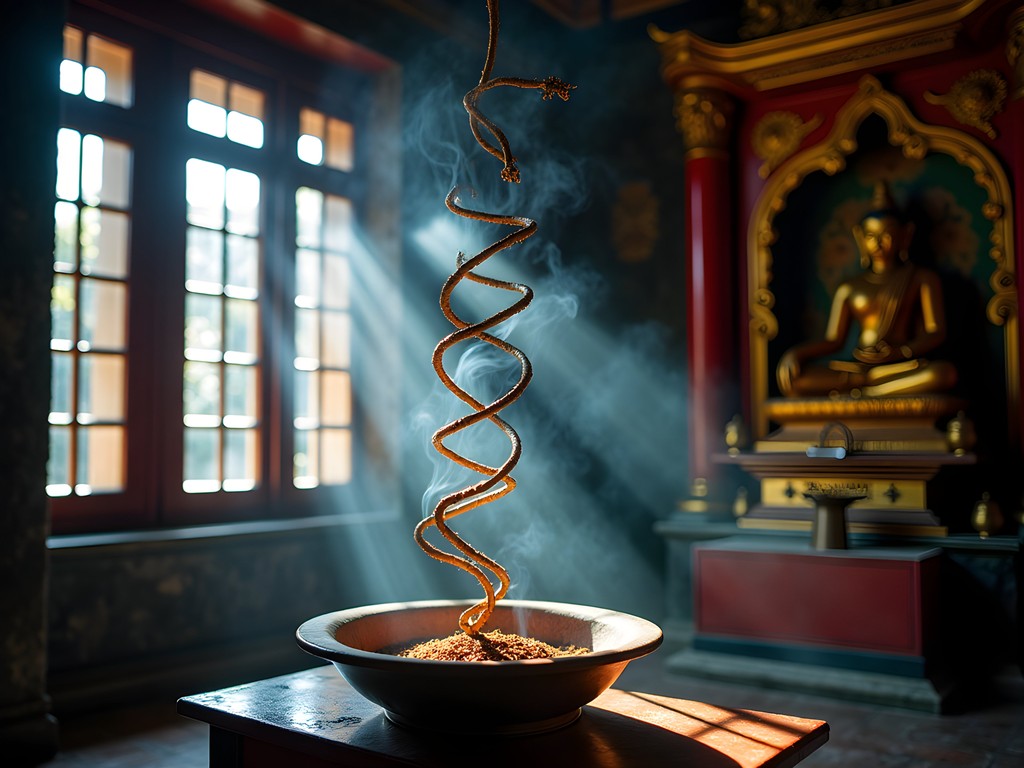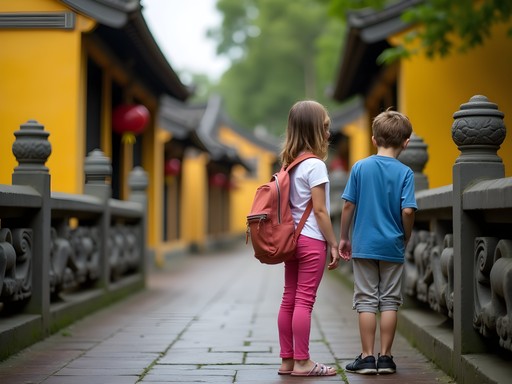Disclosure: This article contains affiliate links. We may earn a commission from purchases at no extra cost to you, which helps our travel content.
The moment my feet hit Hoi An's ancient streets, I knew I'd stumbled onto something magical. It was late afternoon, that golden hour when the sun paints everything in honey-colored light, and the centuries-old buildings seemed to glow from within. After spending two weeks chasing waves along Vietnam's coast (and taking a particularly gnarly tumble off a cliff-jumping spot near Da Nang), I was ready for a different kind of adventure. Hoi An delivered in spades. This pocket-sized ancient trading port might be compact enough to explore in a weekend, but it packs more history, charm and secret spots into its narrow lanes than cities ten times its size. Forget what you've heard about it being just a place for tailor-made clothes and touristy night markets – though those are ace too! This little gem on Vietnam's central coast is a proper historical treasure trove that won't break the bank. Grab your comfiest walking shoes and let's dive into Hoi An's ancient wonders together!
The Ancient Town: Where Time Stands Still
Hoi An's Ancient Town isn't just the heart of the city – it's the reason this place landed on UNESCO's prestigious World Heritage list back in 1999. And crikey, does it deserve the honor! The first time I wandered through these streets, I felt like I'd accidentally stepped through some sort of time portal.
The district is a mesmerizing blend of eras and influences – Chinese temples with their curved roofs sit beside Japanese merchant houses, while Vietnamese tube houses and French colonial buildings complete this architectural layer cake. The best part? No cars or motorbikes are allowed during certain hours, giving you the rare chance to explore a Southeast Asian town without playing a real-life game of Frogger.
The iconic Japanese Covered Bridge is the town's crown jewel and absolutely worth the small fee to cross. Built in the 1590s by Japanese merchants, this wooden structure features intricate carvings of monkeys and dogs – symbols of the years it was started and completed. What most tourists miss is the tiny temple built into the northern side. Duck in there for a moment of zen away from the selfie sticks.
To truly appreciate the Ancient Town, I recommend visiting twice – once during daylight to appreciate the architectural details, and again after sunset when thousands of colorful lanterns illuminate the streets. I captured some of my favorite photos from my entire Vietnam trip during these evening walks, using my trusty travel tripod to nail those long-exposure shots of lantern reflections in the Thu Bon River.

💡 Pro Tips
- Visit the Ancient Town early morning (before 9am) or evening (after 7pm) to avoid the worst crowds
- Purchase a combined ticket for multiple heritage sites to save money
- Some smaller museums close for lunch between 11:30am-1:30pm, so plan accordingly
Assembly Halls: Cultural Crossroads
If you're after a deeper understanding of Hoi An's multicultural past, the five Assembly Halls are your golden ticket. These ornate structures were built by Chinese merchant groups from different regions who settled in Hoi An between the 17th and 19th centuries. Each hall represents a different Chinese province, and they're absolutely dripping with symbolism and history.
My personal favorite is the Fujian Assembly Hall (Phuc Kien), which is dedicated to Thien Hau, the goddess of the sea who protects sailors. The moment you step through its massive wooden doors, you're greeted by a riot of color – red pillars, blue-and-green glazed roof tiles, and intricate ceramic friezes depicting Chinese legends. The central courtyard with its small pond creates this perfect peaceful vibe that's ideal for escaping the midday heat.
The Cantonese Assembly Hall (Quang Dong) is equally impressive, with its shrine dedicated to Quan Cong, a deified general representing loyalty and righteousness. I spent ages studying the detailed murals that tell stories of ancient battles and mythological scenes.
What most tourists miss is that these halls aren't just historical monuments – they're still active community centers and places of worship. Time your visit right and you might witness locals bringing offerings of fruit and incense. I was lucky enough to stumble upon a small ceremony at the Hainan Assembly Hall, and it was one of those authentic travel moments you can't plan for.
Don't forget to look up when exploring these halls – the ceilings are architectural masterpieces with wooden carvings that will make your jaw drop. I captured some amazing detail shots using my wide-angle lens, which is perfect for interior architectural photography in these dimly lit spaces.

💡 Pro Tips
- Remove your shoes before entering the inner sanctums of the assembly halls
- Visit during morning hours when the light streams beautifully through the courtyards
- Bring small change for donations at each hall
My Sơn Sanctuary: Vietnam's Hidden Angkor
Just 40 kilometers southwest of Hoi An lies what I can only describe as Vietnam's answer to Cambodia's Angkor Wat – the My Sơn Sanctuary. This collection of partially ruined Hindu temples was built between the 4th and 14th centuries by the Champa Kingdom and offers a completely different historical perspective than what you'll find in Hoi An proper.
I booked a sunrise tour (worth the early wake-up call, I promise!) to beat both the crowds and the heat. There's something properly magical about watching the morning mist lift off these ancient brick towers as the jungle awakens around you. The site is nestled in a lush valley surrounded by mountains, creating this dramatic backdrop that makes you feel like you're in an Indiana Jones film.
What struck me most was learning how these temples were constructed without using mortar. The Cham people had a special technique of fitting bricks together so precisely that they've stood for centuries, despite wars and weather. Many structures were sadly damaged during the Vietnam War bombings, but enough remains to give you a sense of their former glory.
The site is divided into several groups of temples, each with unique architectural features. Group B contains some of the best-preserved structures, while Group A showcases impressive stone carvings of Hindu deities. I spent about three hours exploring, but history buffs could easily spend half a day here.
For the best experience, I recommend hiring a local guide (around 100,000 VND) who can explain the religious significance and architectural techniques. I went with a small group tour that included transport from Hoi An for about $15 USD – an absolute bargain considering it included entrance fees and a simple breakfast.
Be prepared for the heat and humidity! I was drenched within minutes despite the early hour. My quick-dry hiking shirt was a lifesaver, wicking away sweat while providing sun protection on exposed temple areas.


💡 Pro Tips
- Book a sunrise tour to avoid the midday heat and crowds
- Wear comfortable walking shoes as the terrain is uneven
- Bring mosquito repellent – the jungle setting means plenty of buzzy visitors
Hidden Temples: Beyond the Tourist Trail
While most visitors stick to Hoi An's Ancient Town, some of my most memorable discoveries happened when I ventured just a few streets beyond the main tourist drag. The town is dotted with lesser-known temples and ancestral houses that offer a more authentic glimpse into local spiritual life – without the crowds or entrance fees.
One of my favorite finds was the Ong Temple (Chua Ong) on Nguyen Hue Street. This small Chinese temple dedicated to Quan Cong might not have the grandeur of the assembly halls, but what it lacks in size it makes up for in atmosphere. I stumbled upon it while getting gloriously lost in the back streets and ended up spending nearly an hour watching locals perform their daily rituals, the air thick with incense and devotion.
Another hidden gem is the Quan Am Pagoda on Nguyen Hue Street. This Buddhist temple features a beautiful garden courtyard and a statue of Quan Am (the Goddess of Mercy) with her thousand arms and eyes. I visited during a quiet afternoon when only a handful of local worshippers were present, creating this peaceful vibe that felt worlds away from the bustling Ancient Town just blocks away.
For those willing to venture slightly further afield, the Van Duc Pagoda sits about 5km from the town center. This active monastery rarely sees foreign visitors, which makes for a more authentic experience. The monks were incredibly welcoming, and one even gave me an impromptu tour of the grounds in broken English. The temple's garden is particularly stunning, with bonsai trees and lotus ponds creating a serene backdrop.
Exploring these hidden temples can be thirsty work in Vietnam's heat. I always carry my insulated water bottle which keeps water cold for hours even in tropical temperatures. It's been my trusty companion through dozens of temple explorations across Southeast Asia.

💡 Pro Tips
- Dress respectfully when visiting temples (covered shoulders and knees)
- Always ask permission before photographing people at worship
- Visit during early morning or late afternoon when locals tend to perform their rituals
Ancestral Houses: Living History
While temples and assembly halls showcase Hoi An's public face, it's the ancestral houses that offer a glimpse into the private lives of the merchant families who once made this port town prosperous. These centuries-old wooden houses combine living quarters, commercial spaces, and family shrines in a uniquely Vietnamese arrangement known as 'tube houses' – narrow but incredibly deep structures designed to minimize street frontage (which was taxed).
The Tan Ky House is perhaps the most famous, having been preserved by the same family for seven generations. What makes this place special is that it's still a family home – not just a museum. The architecture is a fascinating blend of Japanese, Chinese and Vietnamese influences, with carved wooden panels, a stunning courtyard, and furniture inlaid with mother-of-pearl. The guide (usually a family member) will point out clever design features like how the house was built to withstand the annual floods that once plagued Hoi An.
I also loved the Phung Hung House, which features an amazing wooden ceiling in the shape of a turtle shell – a symbol of longevity. The merchant family who lived here traded in cinnamon, pepper, and medicinal herbs, and you can still see some of their antique scales and trading equipment displayed throughout.
For something slightly different, the Duc An House functions as both a home and a traditional Chinese medicine shop. The current owner is a descendant of the original herbalist and is happy to chat about traditional remedies if you show genuine interest. The walls are lined with tiny drawers containing various herbs and medicinal ingredients – it's like stepping into a time capsule.
What I found fascinating about these houses is how they've adapted to modern life while preserving their heritage. You'll often see ancestral altars right next to modern televisions, or ancient furniture alongside contemporary household items. It's living history in the truest sense.
If you're planning to visit several ancestral houses, I recommend spacing them out to avoid 'old house fatigue.' I visited one in the morning and another in late afternoon, which gave me time to appreciate their unique features without feeling like I was seeing the same thing twice.

💡 Pro Tips
- Purchase the Old Town ticket that includes entry to several ancestral houses for better value
- Visit during the morning when natural light illuminates the interior courtyards beautifully
- Look for the flood markers on the walls showing historic water levels during Hoi An's famous floods
Final Thoughts
As I wandered back through Hoi An's lantern-lit streets on my final evening, pausing on the Japanese Bridge to watch boats drift lazily along the Thu Bon River, I couldn't help but feel I'd experienced something truly special. This little pocket of Vietnam manages to preserve its ancient soul while embracing visitors with open arms. What makes Hoi An's historical sites so compelling isn't just their age or architectural beauty – it's how seamlessly they're woven into everyday life. Temples aren't just tourist attractions but active places of worship. Ancient houses aren't museums but living homes where families continue centuries-old traditions. Whether you're a history buff, a photography enthusiast, or just someone seeking authentic cultural experiences, Hoi An's ancient wonders deliver in spades – and all without breaking the bank. So grab your camera, lace up your walking shoes, and prepare to step back in time. This ancient trading port is ready to share its secrets with you.
✨ Key Takeaways
- Hoi An's UNESCO sites are best explored early morning or evening to avoid crowds and heat
- The My Son Sanctuary makes an excellent half-day trip and offers a different historical perspective
- Look beyond the main tourist sites to discover hidden temples where locals still worship
- Ancestral houses provide insight into the daily lives of merchant families through centuries
- Hoi An is extremely budget-friendly – most historical sites cost just a few dollars to enter
📋 Practical Information
Best Time to Visit
September-November (fall) or February-April (spring)
Budget Estimate
$30-50 USD per day including accommodation, food and sightseeing
Recommended Duration
2-3 days minimum, ideally a long weekend
Difficulty Level
Easy
















Comments
wildguy
That shot of the lanterns reflecting in the river is absolutely stunning! What camera settings did you use?
redpro
Just got back from Hoi An last week and your post captured it perfectly! Those Assembly Halls were my favorite part - especially the Fujian one with all the incense coils hanging from the ceiling. We went during a ceremony and the atmosphere was incredible. One tip for anyone going - the Ancient Town gets SUPER crowded in the evening. We found early morning (like 6-7am) was magical for photos without the crowds. Also, don't miss Reaching Out Tea House - it's run by deaf and mute staff and the silence makes for such a peaceful experience.
coffeelife
Thanks for the tea house recommendation! Adding it to my list right now.
Nicole Russell
Francesca, your post is giving me serious wanderlust! I was in Hoi An earlier this year and discovered this tiny family temple down an alley near Cam Nam Island that almost no tourists visit. The caretaker was this sweet elderly man who showed me ancestral photos dating back generations. For anyone visiting, don't just stick to the main sites - the magic of Hoi An happens when you wander the back alleys. Also, I found my travel journal perfect for sketching the architectural details - there are so many unique doorways and windows!
hikingrider
Going next month! How many days would you recommend staying in Hoi An?
Nicole Russell
I'd say minimum 3 days! One for Ancient Town, one for My Son, and one for biking around the countryside and beaches. But honestly, I stayed for 5 and could have stayed longer - it's such a charming place!
hikingrider
Thanks! Will plan for 4 days then. Any specific beaches you recommend?
Jean Wells
Francesca, your description of My Son Sanctuary brought back so many memories. I visited last year during monsoon season (not recommended!) and had the entire complex almost to myself. The mist hanging between the towers created this ethereal atmosphere that was both haunting and beautiful. For anyone planning to visit, I suggest going very early morning (first shuttle at 5:30am) to avoid both crowds and heat. The light for photography is much better then too. Did you notice how different the brick-building techniques are from Angkor? The Cham people didn't use mortar between bricks - fascinating engineering.
wildguy
Was it difficult getting to My Son that early? I'm planning a trip and wondering about transportation options.
Jean Wells
I hired a private driver through my hotel for about $25 round trip. Worth every penny for the flexibility! The public buses don't start that early.
coffeelife
Those lantern photos are absolutely stunning! Really captures the magic of Hoi An at night. Can't wait to visit someday!
bluehero5745
Going to Vietnam next month and Hoi An is on my list! How many days would you recommend staying there? Is it worth doing a cooking class?
Francesca Mills
I'd recommend at least 3 full days - one for the Ancient Town, one for My Son, and one for exploring the surrounding villages or beaches. And YES to the cooking class! I did one at Tra Que Vegetable Village where we picked our own herbs - absolutely worth it!
Jean Wells
I second Francesca's recommendation. The Red Bridge cooking school also offers an excellent class that includes market shopping and a boat ride. Don't miss getting clothes made if you have time - the tailors can work miracles in 24-48 hours.
bluehero5745
Thanks both! Just booked 4 nights and will definitely do a cooking class. Can't wait!
Jean Wells
Excellent coverage of Hoi An's cultural landscape, Francesca. I've visited three times over the past decade and have observed interesting changes in preservation efforts. The balance between tourism and authenticity is becoming increasingly delicate. For those planning to visit My Son, I'd recommend arriving by 7:30am to avoid both crowds and heat. The site has far fewer restoration efforts than Angkor Wat, which actually lends it a more atmospheric quality. I found using this guidebook particularly helpful for understanding the Cham symbolism in the temple carvings. Did you happen to visit any of the craft villages outside town? The woodcarving workshops in Kim Bong village provide fascinating context for the ornate details seen throughout the Ancient Town.
Francesca Mills
Thanks for the thoughtful comment, Jean! I did visit Kim Bong village and was mesmerized by the craftsmanship. I actually have a separate post coming up about the craft villages around Hoi An - the pottery in Thanh Ha village was another highlight. And completely agree about My Son's atmospheric quality - the minimal restoration really does preserve that sense of discovery.
photoguy
Wow, those lantern reflections on the river are magical! Hoi An just moved to the top of my bucket list!
wanderphotographer
Your photos of Hoi An at golden hour are absolutely stunning, Francesca! I visited last year and totally missed the hidden temples you mentioned beyond the tourist trail. Wish I'd seen this post before my trip! Did you find the Assembly Halls crowded? I remember the Fujian one being packed when I went, but the architecture was still breathtaking. The wood carvings were my favorite part.
Francesca Mills
Thanks so much! The Assembly Halls do get crowded mid-day, but I went first thing in the morning (around 8am) and had almost the whole place to myself. Definitely worth the early wake-up call!
wanderphotographer
That's a great tip! Definitely doing the early morning visit next time. Your My Son photos have me planning a return trip already!
Venture X
Premium card with 2X miles, $300 travel credit, Priority Pass